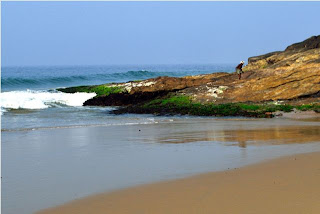APERTURE OF YOUR CAMERA
Learn The Aperture setting of your DSLR & Semi-Professional Camera
( Professional Series Photography Blog © Dr.Mousam Jefferin 2012 )
What do we Understand by Aperture - Its the Ring in side the Lens of your camera which open up and closes while you take photographs. Its the part of your lens which actually decide how much light will enter in your sensor for producing a photograph , so its simple ........
 |
| Aperture Blade (Closing) |
 |
| Aperture Blades (Open) |
If Aperture is Big Wide Open then More and More Light will enter
and we will get Bright PhotographS.
Vice versa
If Aperture is Small, Narrow , and closing down Less Light will enter
and we will get Dark Photograph.
Is it done NO. . . . . .
A Big and Wide Aperture also make your Depth of Field Very Shallow. Means area of Photograph which is in Sharp Focus will be very Less. again
Vice versa
A Small Narrow Aperture gives you Deep or wider Depth of Field. Means more area or subjects will be in sharp focus.
.JPG) |
| F /2.8 ----- Flower in Front left and Back (Pink one) are BLUR (Original Photograph as taken in camera) |
.JPG) |
| F /13 ------- All flowers are visible and in sharp focus ( Photograph has been brighten up in software ) |
So Some advantages and some disadvantages which can be exploit as per your need. Ideally we need to make balance of both the property for individual lens. Brightness of Picture and Depth of Focus area both different with different Lens. This property will be more prominent in Fix Focal Lens even a cheaper one and least appreciable in Zoom lens.
How we say Wide and Narrow Aperture in Technical way - Aperture is shown in F Stop.
( Its Not SPOT its STOP) When Aperture is wide reading will Low in Number like F/1.8 or F/2 or F/2.8 if the Aperture is Narrow the reading will be F/13 or F/16 OR F/22. Practically if Aperture in more open and allowing more light to enter reading will be F/1.8, 2, 2.8 and Vice Versa.
( Another Practical understanding is That If you Buy a Lens of 18-55mm F/3.5 at price of 100$ (Rs.5000/- INR ) Price of 18-55mm F/2.8 will be 10 times or 1000$ (Rs.50000/- INR) . This is because making wide Aperture lens need more precision and very higher optical technology . On the contrary a 35 or 50mm fix focal but F/1.8mm Lens will cost just 2 times or may be same price of 18-55mm F/3.5 BUT it is not a zoom lens at all, again it will give your pictures a very good Aperture Effects. In this Fix focal Category Long Focal Lenth lens like 100mm or 150mm with F/2.8 are costlier but again the Quality comes at a Price.)
( Another Practical understanding is That If you Buy a Lens of 18-55mm F/3.5 at price of 100$ (Rs.5000/- INR ) Price of 18-55mm F/2.8 will be 10 times or 1000$ (Rs.50000/- INR) . This is because making wide Aperture lens need more precision and very higher optical technology . On the contrary a 35 or 50mm fix focal but F/1.8mm Lens will cost just 2 times or may be same price of 18-55mm F/3.5 BUT it is not a zoom lens at all, again it will give your pictures a very good Aperture Effects. In this Fix focal Category Long Focal Lenth lens like 100mm or 150mm with F/2.8 are costlier but again the Quality comes at a Price.)
Common Understanding Table.
1. Wide Aperture F 1.8 / 2 / 2.8 -
BRIGHT PHOTO - SHALLOW AREA IN FOCUS - Total Background Blur
( Good for Low Light Photography , Night , Portrait , Macro)
2. Narrow Aperture F 13 / 18 / 22 -
DARK PICTURE - MORE AREA IN FOCUS - Background Visible
(Only for Day Light Photography, Landscapes, With Flash Photography)
If you practice the Aperture Setting repeatedly with your lens you will understand it is very important part of Photography by DSLR cos this decide a lot of thing in your Photographs.
This was Part one will post some more details of Aperture very soon
Thanks
Dr.Mousam Jefferin
©Dr.Mousam Jefferin 2012
Like My Page on Facebook
Dr.Mousam Jefferin Photography
www.facebook.com/drmousamphoto
Like My Page on Facebook
Dr.Mousam Jefferin Photography
www.facebook.com/drmousamphoto









